So, what exactly is Shiraz wine?
At its heart, Shiraz is the Australian name for the Syrah grape. It’s famous for producing a bold, full-bodied red wine absolutely packed with dark fruit flavours and a signature peppery spice. This iconic varietal is a true cornerstone of Australian wine culture, celebrated for its rich profile and amazing versatility.
An Introduction to Australia's Signature Red Wine
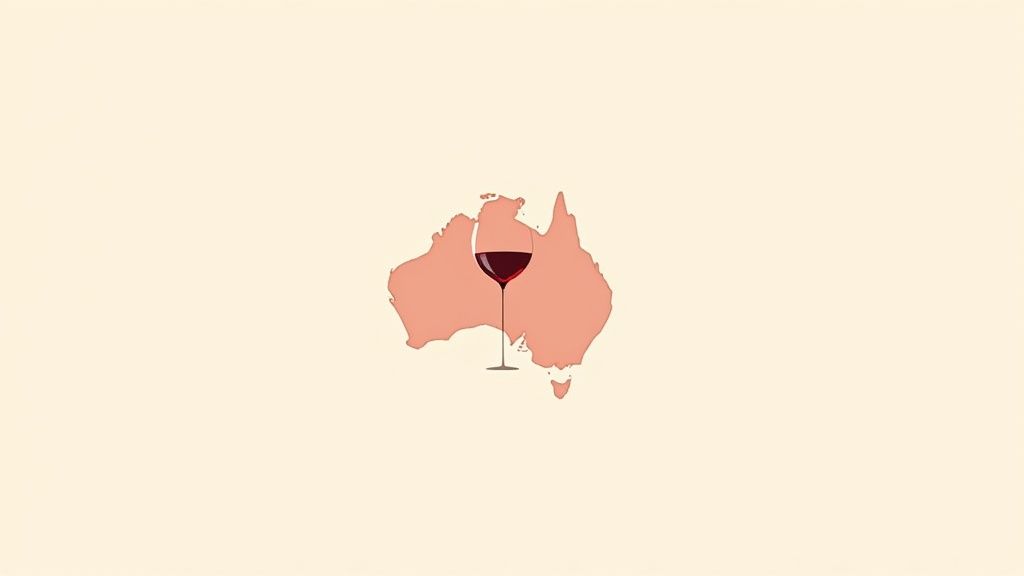
Shiraz is more than just a grape; it’s a style. While genetically identical to the French Syrah grape, the Australian version developed its own distinct personality under the warm Aussie sun. Think of it as an identical twin who moved abroad and developed a bolder, more outgoing character.
The wine is prized for its intense and complex flavour profile. Let's get straight into what you can expect in the glass.
Shiraz Wine At A Glance
To give you a quick snapshot, here’s a simple breakdown of what makes Shiraz, well, Shiraz.
| Characteristic | Description |
|---|---|
| Primary Flavours | Blackberry, plum, black cherry, and blueberry. |
| Key Aromas | Pepper, clove, liquorice, and sometimes a hint of dark chocolate. |
| Body | Typically full-bodied with a rich, velvety texture. |
| Tannins | Medium to high, providing structure and ageing potential. |
| Acidity | Medium, which keeps the rich fruit flavours feeling fresh. |
| Oak Influence | Often adds notes of vanilla, mocha, smoke, and spice. |
This table gives you the basics, but the real magic is in how these elements come together in a bottle from a specific region or winemaker.
This wine's powerful nature makes it a fantastic partner for food, especially hearty dishes that can stand up to its intensity. Whether you're enjoying a bottle yourself or looking for the perfect present, Shiraz holds a special place among red wines. For those exploring gift ideas, various wine gift box options are available that often feature this popular varietal.
This guide will walk you through its fascinating history, diverse regional styles, and tasting notes, giving you a complete picture of Australia’s favourite red.
Tracing the Journey of Shiraz from France to Australia
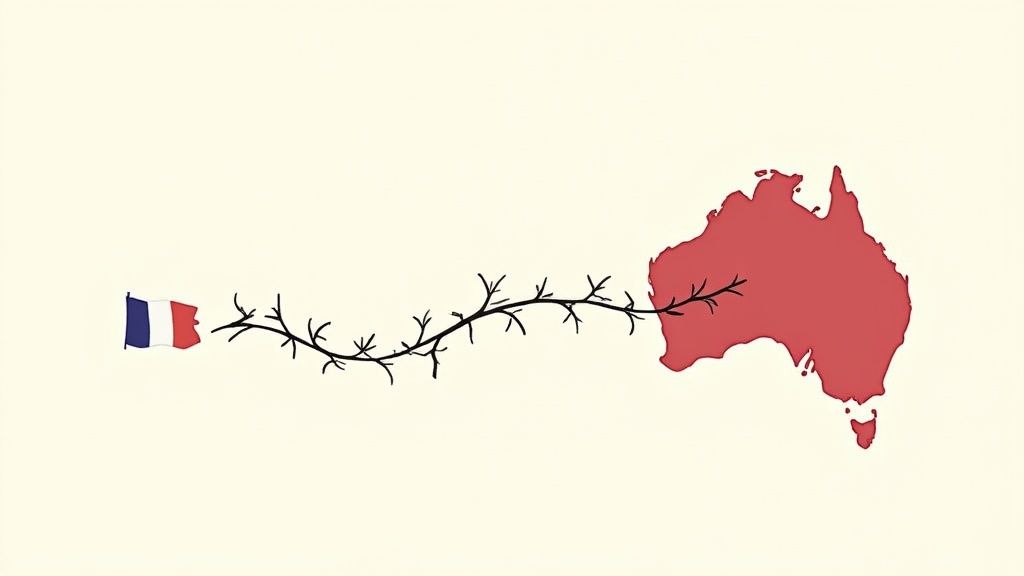
Every great wine has a story, and the tale of Shiraz is a classic journey of transformation. The grape’s story begins not in Australia, but in the northern Rhône Valley of France, where it is known as Syrah. For centuries, Syrah has been the star of legendary French appellations like Hermitage and Côte-Rôtie, celebrated for its savoury, elegant, and complex character.
This French classic found its way to Australian shores in 1832. A Scottish viticulturist named James Busby, often called the "father of the Australian wine industry," imported a collection of vine cuttings from Europe, including Syrah. He planted these first vines in the Hunter Valley, setting the stage for a dramatic evolution.
A New Home and a New Name
The Australian continent offered a dramatically different environment from the Rhône Valley. The warmer climate, abundant sunshine, and unique soils fundamentally changed how the grape expressed itself. Instead of the lean, peppery profile of French Syrah, the Australian vines produced a richer, bolder wine bursting with ripe fruit flavours.
This new, more powerful style demanded its own identity. The name "Shiraz" became widely adopted, distinguishing the Australian expression from its European ancestor. It’s a perfect example of how terroir—the complete natural environment in which a particular wine is produced—shapes a grape’s destiny.
This shift wasn't just about a name; it was about the birth of a new wine identity. The Australian climate allowed the grape to develop a generosity and boldness that was entirely its own, creating a global icon.
The journey from a French Syrah cutting to a powerhouse Australian Shiraz is a fascinating one. To dive deeper into this history, you can read our guide on the origins of the Syrah-Shiraz wine grape. This history is why Shiraz is so deeply woven into Australia’s winemaking identity.
Decoding the Rich Flavours of Shiraz Wine
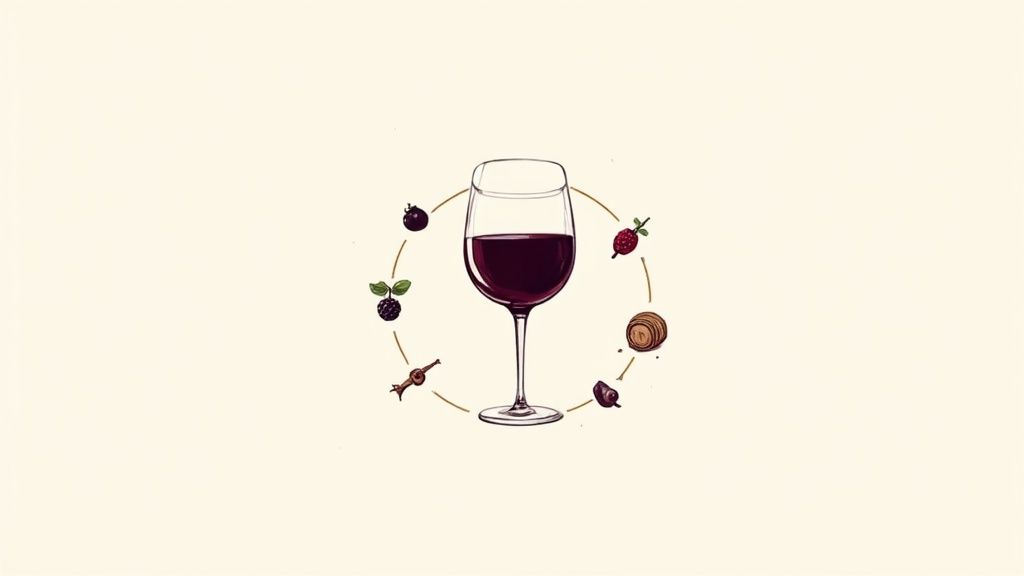
Tasting a glass of Shiraz is a full sensory experience—a complex dance of fruit, spice, and texture. The primary flavours are usually dark and concentrated, almost like a rich berry compote. Think ripe blackberry, juicy plum, and maybe even a touch of dark cherry. These bold fruit notes are the heart and soul of what makes Shiraz, Shiraz.
But the fruit is only where the story begins. Layered on top of that is a distinctive spicy character that really sets Shiraz apart. The most classic note is black pepper, often joined by warmer hints of clove, anise, or even liquorice. That peppery kick is a signature trait, especially in wines from cooler Australian regions.
Understanding Body and Texture
When you hear a wine described as "full-bodied," think of the difference between skim milk and full-cream milk. Shiraz has that weighty, velvety presence on the palate.
This richness is balanced by tannins, which are natural compounds from the grape skins. They create that slightly drying sensation, almost like a strong cup of black tea. In a well-made Shiraz, these tannins feel firm but smooth, giving the wine structure and a long, satisfying finish.
The influence of oak ageing is another crucial piece of the puzzle. When Shiraz is matured in oak barrels, it picks up extra layers of complexity.
- Vanilla and Mocha: These sweet, creamy notes help soften the wine’s powerful fruit.
- Smoke and Leather: Oak can add savoury, earthy aromas that give the wine real depth.
- Toasted Spice: Hints of cinnamon or nutmeg often emerge from time spent in the barrel.
The beauty of Shiraz lies in this incredible balance. It’s a powerful wine where bold fruit, spicy notes, and smooth tannins all come together to create a rich, harmonious, and deeply satisfying glass of red.
These aromatic layers are what make wine tasting so interesting. If you want to get better at picking them out, you can learn more by decoding wine aromas from fruity to funky notes in our detailed guide. Mastering these basics will give you the confidence to describe exactly what you're tasting in your next glass.
The Shifting Story of Australian Shiraz
The story of Australian Shiraz isn't just what’s in the bottle; it’s a tale of constant adaptation. Winemakers Down Under are grappling with a tricky mix of environmental and economic pressures that have a real impact on the wine you pour into your glass. Their resilience is put to the test every season.
Climate change, for one, is a massive factor. Wild weather is becoming more common, forcing growers to get creative in the vineyard to protect their grapes. That might mean picking earlier than usual or trying new ways to water the vines to keep them healthy through the tough times.
A Squeeze on Production
All these pressures have a direct effect on just how much Shiraz gets made. For years, Australia was a Shiraz powerhouse, reliably crushing around 400,000 tons of grapes each year, making it the undisputed king of Aussie reds.
But things have started to change. In 2023, the harvest dropped to roughly 340,000 tons, and by 2024, it sank even lower to about 290,000 tons—the smallest haul since 2007. This dip is a result of tough growing seasons combined with economic headwinds, like heavy tariffs from major export markets. You can get the full scoop on this production shift from Vinetur.com.
In a surprising twist, 2024 was the first time in over a decade that Chardonnay production actually overtook Shiraz, showing just how quickly things can change in the wine world.
This isn’t a story about decline, though. It’s about grit. Aussie winemakers are proving their skill by finding new vineyard sites and tweaking their techniques. They're doing whatever it takes to ensure Australian Shiraz continues to deliver the quality and character we all love, no matter the challenges. It’s a testament to the passion poured into every single bottle.
Exploring Australia's Premier Shiraz Regions
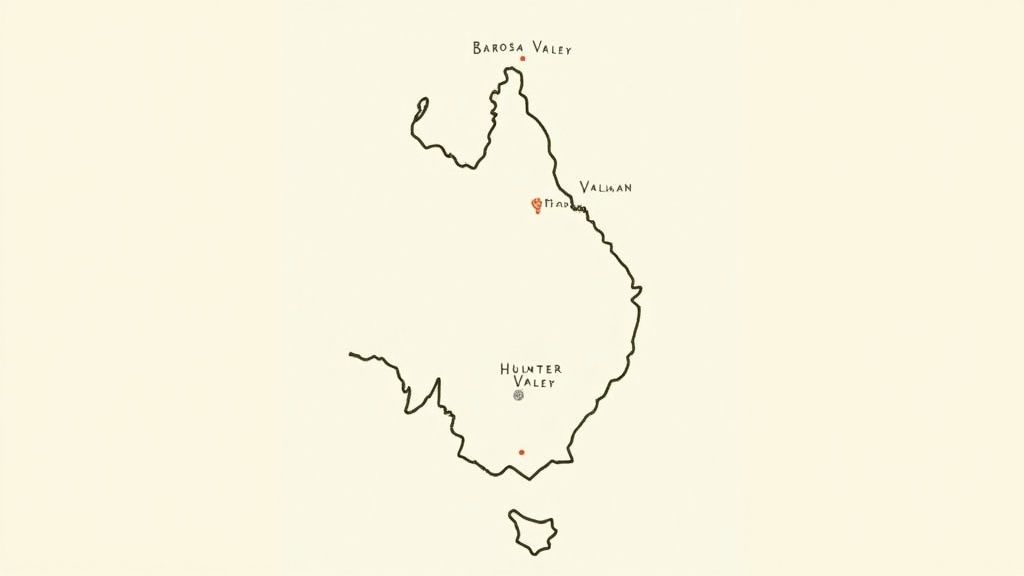
To truly get what Shiraz is all about, you have to explore where it grows. Australia’s diverse landscapes create a fascinating spectrum of Shiraz styles, each shaped by its unique terroir—that magic combination of soil, climate, and geography. This is exactly why a Shiraz from one region can taste dramatically different from another.
Think of it like coffee beans. The same bean will taste completely different depending on where it’s grown, and it's the same deal for the Shiraz grape. A warm climate gives you a bolder, jammier wine, while a cooler climate creates a more elegant, spicy style. This variation is what makes exploring Aussie Shiraz so much fun.
The Powerhouses of Australian Shiraz
Australia is home to several world-class Shiraz regions, each with its own distinct personality. Getting to know the key players is your shortcut to finding a bottle you’ll absolutely love.
- Barossa Valley, SA: This is the undisputed king of bold Shiraz. The warm climate and ancient soils forge powerful wines bursting with intense blackberry, mocha, and liquorice flavours. A Barossa Shiraz is rich, opulent, and built to age beautifully.
- McLaren Vale, SA: Just south of Adelaide, this region is famous for its velvety, full-bodied Shiraz. You can expect flavours of dark chocolate and plum, with a savoury, earthy complexity that makes it a brilliant food wine.
- Hunter Valley, NSW: As one of Australia’s oldest wine regions, the Hunter produces a more medium-bodied, savoury style of Shiraz. Its unique climate results in earthy, leathery notes that develop wonderfully over time.
Each region acts as a stamp on the bottle, telling you what to expect inside. Learning the difference between a bold Barossa and an elegant Yarra Valley Shiraz is the key to mastering Australia's favourite red.
Despite facing production challenges, Shiraz remains Australia’s most planted red grape. Its global reputation is also climbing again, with export values rocketing from AUD 8.1 million in 2023 to over AUD 400 million after key trade tariffs were lifted. This remarkable comeback just goes to show the enduring appeal of premium Australian Shiraz.
For a deeper dive into these iconic spots, check out our guide to uncovering the secrets of Australia’s premier Shiraz regions.
How to Pair Shiraz with Food
The secret to creating unforgettable food pairings with Shiraz comes down to one simple principle: match the wine’s intensity. This is a big, full-bodied red with bold flavours and firm tannins, so you need a dish that can go toe-to-toe with it without getting lost. Think rich, savoury, and packed with flavour.
The classic, can't-go-wrong pairing for a powerful Australian Shiraz is grilled or barbecued red meat. A juicy, perfectly charred steak or a rack of lamb seasoned with rosemary and garlic creates a beautiful harmony. The wine’s tannins are brilliant at cutting through the richness of the fat, while its dark fruit and spice notes are the perfect companion to that smoky flavour.
Classic and Creative Pairings
Beyond the steakhouse, Shiraz is incredibly versatile, especially with hearty, rustic dishes. Its robust personality makes it a natural partner for slow-cooked meals and big, bold flavours.
- Hearty Stews and Casseroles: A rich beef and mushroom stew or a slow-braised lamb shank is an absolute winner. The wine’s depth beautifully echoes the dish's deep, savoury notes.
- Gourmet Burgers: Don’t just think of beer! A high-quality burger loaded with bold toppings like blue cheese, bacon jam, or caramelised onions is a fantastic match for Shiraz.
- Aged Cheeses: Put together a platter of strong, hard cheeses. An aged cheddar or a nutty gouda has the intensity to stand proudly alongside a glass of powerful Shiraz.
Your Shiraz Questions, Answered
Alright, let's wrap things up by tackling a few of the most common questions we hear about Shiraz. Think of this as your cheat sheet to help you buy, pour, and enjoy this incredible Aussie red like a pro.
What's the Best Temperature to Serve Shiraz?
You'll want to serve Shiraz at a cool room temperature, right around 16–18°C. If you serve it too warm, the alcohol can seem a bit harsh and overpowering. Too cold, and all those beautiful dark fruit and spice notes will hide away.
A great little trick is to pop the bottle in the fridge for about 20 minutes before you plan to drink it. This brings it down to the perfect sweet spot where its character really shines.
How Long Can You Cellar Shiraz?
This is a classic "it depends" situation. Most easy-drinking, fruit-forward Shiraz is made to be enjoyed within 3–5 years of its vintage. They’re delicious right off the shelf.
But then you have the big guns. A premium, well-structured Shiraz from a top-tier region like the Barossa Valley or McLaren Vale can age gracefully for a decade, sometimes much longer. Over time, those punchy fruit flavours soften and transform into something more complex and savoury, with hints of leather, earth, and dried fruit.
Is Shiraz a Sweet or Dry Wine?
Shiraz is almost always a dry red wine. What does that mean? During fermentation, the yeast gobbles up nearly all the natural grape sugars and converts them into alcohol.
That said, it's easy to see why people ask. The intense, ripe fruit flavours—think blackberry jam and juicy plums—can give the impression of sweetness, but there’s actually very little residual sugar left in the final wine.
Here at McLaren Vale Cellars, we live and breathe the rich, complex, and utterly delicious styles of Shiraz from one of Australia's most famous wine regions. Ready to explore? Check out our curated selection and find your next favourite bottle today.

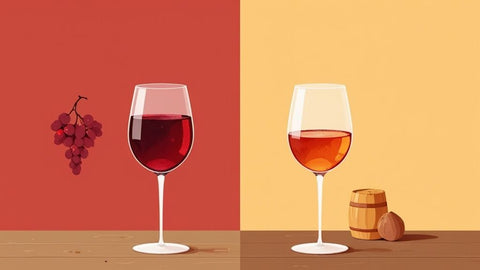
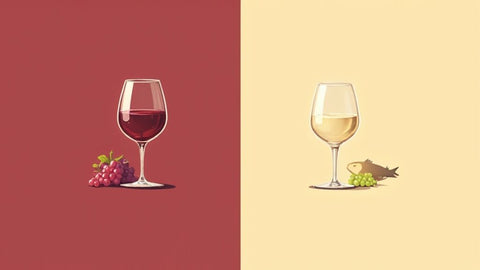

Comments (0)
There are no comments for this article. Be the first one to leave a message!